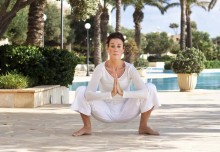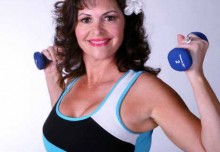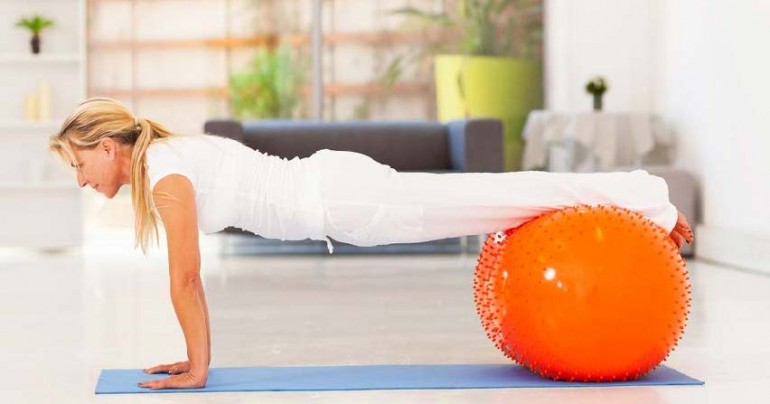
When the full impact of going though menopause left me fatigued, with the “yum” of life slipping away, and the cells of my body clogged with the detritus of half a decade, exercise offered a restorative salve.
Deeply disappointing. I’ve been trawling around menopause books lately to see whether they endorse exercise as the closest thing there is to a magic pill.
I’ve been looking for confirmation of my own experience, that in my mid-life, exercise has shifted from a light-hearted endeavor spurred mainly by vanity to an absolutely necessary, daily elixir. But no.
Sure, the books recommend exercise. “A Woman’s Guide to Menopause and Perimenopause” dedicates four pages to the topic and notes dryly, “The benefits of physical activity are well known both to those who exercise and those who do not.”
Yawn. How can they be so lackluster about it? Why are they not shouting from the rooftops? “Sisters, just do it! This is the closest thing to salvation!” I sound like a fanatic. But I’m speaking from the wisdom of my own physical education — and my own shock at the night-and-day difference exercise makes in the quality of my mid-life. Here’s my story:
I began a new job as co-host of CommonHealth, the health blog at the Boston public radio station WBUR, at age 49, well into menopause territory. My hormone-emitting IUD had long since stopped my periods, so I couldn’t know whether I was technically in full menopause, but I could certainly feel hormonal changes.
No need to get deeply into those familiar plaints, but a couple of phenomena stood out: I was vaguely aware of sinking into anhedonia, the inability to feel pleasure. It seemed physiological to me: In the presence of something good, whether a child’s achievement or a piece of chocolate cake, I’d note its goodness but feel none of the lifting heart and lightening head, none of the “yum”, that I’d always experienced as pleasure before.
I’m speaking from the wisdom of my own shock at the night-and-day difference exercise makes in the quality of my mid-life
And a side-phenomenon that I’ve never read about anywhere: I seemed to develop some sort of mild, menopause-related autism-spectrum disorder. I let lapse friendships that had lasted decades. I felt as if I were play-acting in many relationships, aware that these ties were worth keeping but unable to feel the underlying affection that had sparked them.
Most of all, I fought fatigue, and the sense that all my cells were simply clogging up with the detritus of half a decade.
Hoping to serve up fun bits of information and perform a public service at the same time, my CommonHealth co-host Rachel Zimmerman and I started a regular feature called “Why To Exercise Today.”
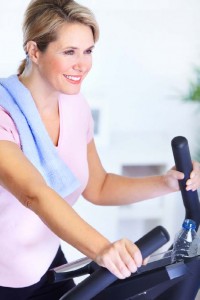
It began with my favorite quotation on the brain benefits of exercise, from the psychiatrist John Ratey: “Going for a run is like taking a bit of Prozac — to lighten mood — and a bit of Ritalin — to heighten attention.”
In the coming weeks, the new feature spanned a gamut of reasons: Exercise as the best way to improve your chances of a healthy old age. Exercise for short-term appetite suppression. For its laxative effect. No alleviate arthritis. To help prevent stroke. To reduce anxiety. To help survive prostate cancer. To preserve memory. To fight the ill effects of salt.
The more reasons I wrote about, the more I seemed to find. If you know where to watch for them, which journals and Websites, you’ll see hundreds of new studies documenting the beneficial effects of exercise coming out each year. I even came upon a poster enumerating 100 reasons to exercise, all in one master list, encompassing virtually every organ, and it still seemed only to scratch the surface.
Now, experts on how to motivate people to change their behavior will tell you that pure, general information is rarely enough. The person has to be ready to change; the person has to see the stakes involved and care about them; the person has to set the right sorts of goals. It’s a whole science.
But I felt the information building, building in my mind. It influenced me to start working out more often, from three times a week to more like six. First, the same old workouts I’d always done, a half hour or so of step aerobics or running or elliptical. Then, as I learned more, I added in strength training on my gym’s weight machines. And I added high-intensity intervals to my aerobic work.
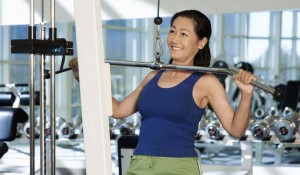 And I started to notice things. My muscles swelled and I learned to love my arms for the first time in my life. I lost no weight, but my body became somehow shapelier. I was feeling older, but not uglier. Who knows if it was the exercise or merely the passage of time, but my ugly hormonal emotions — or rather, my ugly lack of the usual positive emotions — began to fade.
And I started to notice things. My muscles swelled and I learned to love my arms for the first time in my life. I lost no weight, but my body became somehow shapelier. I was feeling older, but not uglier. Who knows if it was the exercise or merely the passage of time, but my ugly hormonal emotions — or rather, my ugly lack of the usual positive emotions — began to fade.
Most of all, I noticed that on the days when I worked out in the morning, I felt fresh and energized and clean. Younger. And on the days that I didn’t work out, I felt draggy and stale and forgetful — older.
It reminded me of the ominous classic novel “The Picture of Dorian Gray.” All my age-related and menopausal ills could be held in abeyance, channeled away just as Dorian Gray shunted all the outward signs of his debauchery to the portrait he’d hidden in a locked room, remaining youthfully beautiful to the outward world.
On the days I didn’t work out, I felt like Dorian Gray at the end of his gothic tale, suddenly bearing the full consequences of the life he’d lived. And thus I stumbled on what I believe to be the best of all possible daily workout motivators:
I don’t dare not to. Especially on days when I need to perform well.
Our CommonHealth blog kept churning out “Why To Exercise Today” posts: It lowers blood sugar and helps with Type 2 diabetes. It helps protect bone density. It helps fight age-related muscle loss. It improves pain tolerance. It is linked to better self-image and social life.
I noticed on the days when I worked out in the morning, I felt fresh and energized and clean. Younger.
Just as exercise seemed able to help with every single organ, it seemed able to help with virtually every menopause-related challenge. I asked Dr. Mache Seibel, editor of this magazine and a specialist on the intersection between menopause and mental health, whether exercise works directly on the hormones involved in menopause, or just does indirect good.
Exercise, he answered, first of all has the broad effect of lowering a person’s overall anxiety and stress, “which is going to make everything a lot better. And it’s going to help you sleep better. Those are things that are going to immediately improve your lifestyle, your life balance. And next, it’s going to help you have better strength, flexibility, and weight control.” It can also lessen hot flashes and other symptoms.
In terms of the hormones estrogen and progesterone, Dr. Seibel said, it can lower a woman’s systolic blood pressure during exercise, but “probably there’s not going to be a specific direct impact at the level of exercise most people do.”
So exercise is unlikely to alter the dose for women who take replacement hormones, he said. However, exercise can have a “synergistic effect” with hormone therapy. For example, say you want to avoid osteoporosis. “Estrogen is great for that, but estrogen plus exercise is better,” he said. “Say you want to prevent heart disease. Estrogen will have a favorable effect on blood flow and on your lipids, generally improve your HDL and lower your LDL, and exercise is going to enhance that.” Estrogen and exercise are such good partners, he figures, “Maybe they should call it extrogen.”
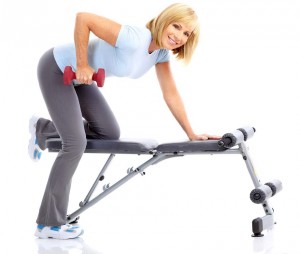 I’m not a “pills are our friends” person. And though I cover health day in and day out, I remain confused about the flip-flop-ping data on Hormone Replacement Therapy. Personally, I’d only opt for hormone therapy if my symptoms were severe, far more severe than they’ve been.
I’m not a “pills are our friends” person. And though I cover health day in and day out, I remain confused about the flip-flop-ping data on Hormone Replacement Therapy. Personally, I’d only opt for hormone therapy if my symptoms were severe, far more severe than they’ve been.
But the data about exercise do not flip flop. Yes, you need to avoid over-doing it and prevent injury, but overall, the findings on exercise improving health are about as consistent and solid as the findings about smoking causing cancer.
And far more of us under-exercise than smoke. The federal recommendations are 150 minutes of moderate exercise a week. That used to seem unimaginably long to me. How I can’t imagine doing without it.
Sometimes, when I’m writing my umpteenth “Why Do Exercise Today” post, I fantasize about writing the headline, “Look. Just take my word for it. Do it.”




